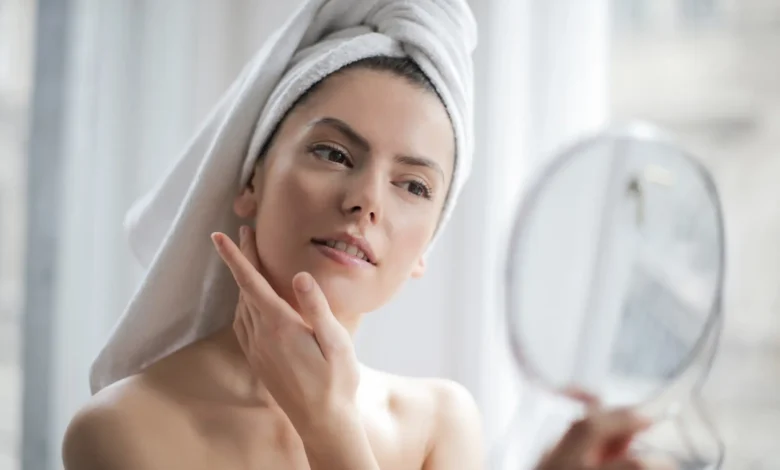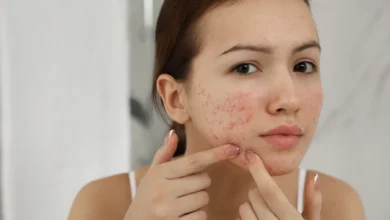Transform Your Skin Naturally with DIY Skincare Solutions

Introduction to the Natural Beauty Movement
In recent years, there has been a significant shift toward natural beauty and eco-friendly skincare. Consumers are becoming increasingly aware of the ingredients they put on their skin and the environmental impact of their beauty routines. This movement is driven by a desire for healthier, more sustainable living, and a growing distrust of synthetic chemicals in commercial products.
In this blog post, we will explore how you can create effective skincare solutions at home using natural ingredients. By understanding your skin type, leveraging the power of nature, and following tried-and-true recipes, you can achieve radiant skin while being kind to the planet.
Understanding Your Skin Type
Before embarking on your natural skincare journey, it’s crucial to understand your skin type and the common issues you may face. This knowledge will help you tailor your DIY skincare solutions to meet your specific needs, ensuring better results.
Identifying Your Skin Type
There are generally five skin types:
- Normal
- Oily
- Dry
- Combination
- Sensitive
Each skin type has unique characteristics and requires different care. For instance, oily skin tends to have larger pores and may be prone to acne, while dry skin can be flaky and tight. Understanding your skin type will guide you in selecting the right ingredients for your DIY skincare products.
Common Skin Issues
Some common skin issues include acne, hyperpigmentation, and aging. Acne is often caused by excess oil production and clogged pores. Hyperpigmentation can result from sun damage or inflammation, leading to dark spots. Aging skin may show signs of wrinkles and loss of elasticity. Addressing these issues with natural ingredients can be both effective and gentle on the skin.
The Power of Natural Ingredients
Mother Nature has provided us with a plethora of ingredients that offer incredible benefits for the skin. Many of these can be found right in your kitchen, making them accessible and affordable.
Honey
Honey is a powerhouse ingredient known for its antibacterial and moisturizing properties. It can help soothe irritated skin, reduce acne, and provide a natural glow. Honey’s natural enzymes also promote gentle exfoliation, making it an excellent addition to DIY masks and cleansers.
Aloe Vera
Aloe vera is renowned for its soothing and healing properties. It’s particularly effective for treating sunburns, minor cuts, and irritated skin. Aloe vera gel can be used as a moisturizer or added to other skincare recipes for an extra hydrating boost.
Coconut Oil
Coconut oil is a versatile ingredient that offers deep hydration and antimicrobial benefits. It’s great for dry skin and can be used as a makeup remover, body moisturizer, and hair treatment. However, those with oily or acne-prone skin should use it sparingly to avoid clogged pores.
DIY Skincare Recipes
Creating your own skincare products at home can be both fun and rewarding. Here are some easy-to-follow recipes for facial cleansers, masks, and moisturizers that cater to different skin types and issues.
Gentle Honey and Oatmeal Cleanser
This gentle cleanser is perfect for all skin types, especially sensitive and dry skin.
Ingredients:
- 2 tablespoons of honey
- 1 tablespoon of finely ground oatmeal
- A few drops of water (if needed)
Instructions:
- Mix the honey and oatmeal in a small bowl.
- Add a few drops of water if the mixture is too thick.
- Apply to your face in circular motions and leave on for 5 minutes.
- Rinse off with warm water and pat dry.
Hydrating Aloe Vera and Avocado Mask
This mask is ideal for providing deep hydration and nourishment.
Ingredients:
- 2 tablespoons of aloe vera gel
- 1/2 ripe avocado, mashed
- 1 teaspoon of olive oil
Instructions:
- Combine all ingredients in a bowl and mix until smooth.
- Apply the mixture to your face and leave on for 15-20 minutes.
- Rinse off with lukewarm water and pat dry.
Light Coconut Oil Moisturizer
Perfect for dry skin, this moisturizer provides intense hydration.
Ingredients:
- 2 tablespoons of coconut oil
- 1 teaspoon of vitamin E oil
- A few drops of your favorite essential oil (optional)
Instructions:
- Melt the coconut oil if it’s solid, then mix in the vitamin E oil and essential oil.
- Pour the mixture into a small container and allow it to solidify.
- Use a small amount to moisturize your face and body.
Tips for Safe and Effective At-Home Skincare
While DIY skincare can be incredibly beneficial, it’s important to follow best practices to ensure safety and effectiveness.
Patch Testing
Always perform a patch test before using a new product on your face. Apply a small amount to your inner forearm and wait 24 hours to check for any adverse reactions. This step is crucial, especially if you have sensitive skin.
Storage and Shelf Life
Natural ingredients can spoil quickly, so it’s essential to store your DIY products properly. Keep them in airtight containers and store them in a cool, dark place. Most homemade skincare products should be used within two weeks to ensure freshness and potency.
Avoiding Common Mistakes
One common mistake is using too many active ingredients at once, which can irritate the skin. Start with simple recipes and gradually introduce new ingredients to see how your skin reacts. Also, be cautious with essential oils; they are highly concentrated and can cause irritation if not diluted properly.
Eco-Friendly Packaging and Sustainability in Skincare
Creating your own skincare products is not only good for your skin but also for the planet. Here’s how you can make your routine even more eco-friendly.
Reusing and Recycling Containers
Opt for glass containers that can be reused and recycled. Avoid single-use plastics and consider buying in bulk to reduce packaging waste. Mason jars, old candle jars, and glass bottles make excellent storage options for your DIY products.
Sustainable Ingredient Sourcing
Choose organic and sustainably sourced ingredients whenever possible. Look for certifications like Fair Trade and USDA Organic to ensure that the products you buy are ethically produced. Supporting local farmers and markets can also reduce your carbon footprint.
Minimalist Approach
Adopting a minimalist skincare routine can significantly reduce waste. Focus on creating multi-purpose products that serve several functions, like a cleanser that doubles as a mask or a moisturizer that can be used for both face and body.
Conclusion
The natural beauty movement offers an exciting opportunity to take control of your skincare routine while promoting sustainability. By understanding your skin type and harnessing the power of natural ingredients, you can create effective, eco-friendly skincare solutions at home.
We hope this guide has inspired you to explore the world of DIY skincare. Remember, the best skincare routine is one that is consistent and tailored to your unique needs. If you’re eager to take your skincare to the next level, consider booking a consultation with one of our experts who can help you refine your approach and choose staple products tailored just for you.
Start your natural beauty journey today and discover the radiant, healthy skin you’ve always dreamed of.


